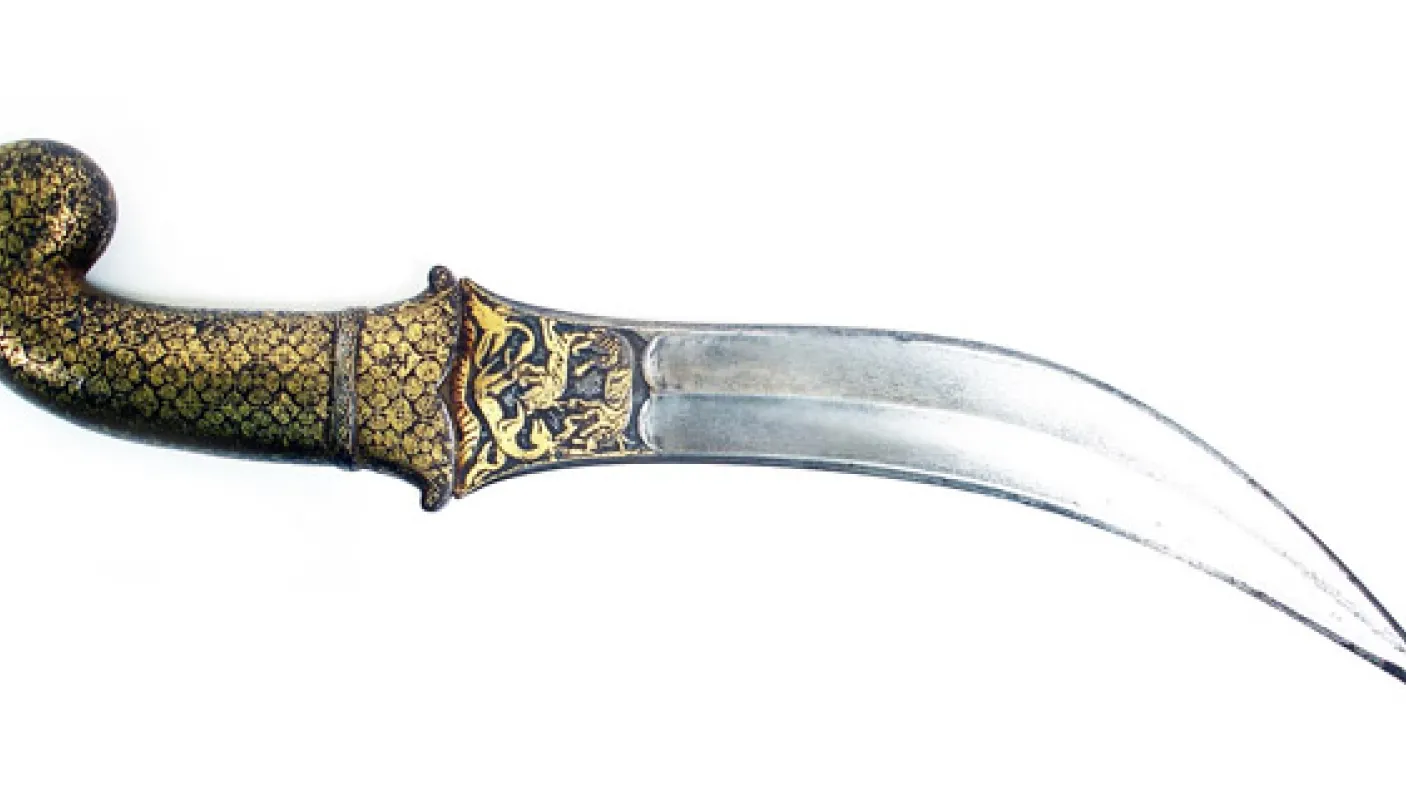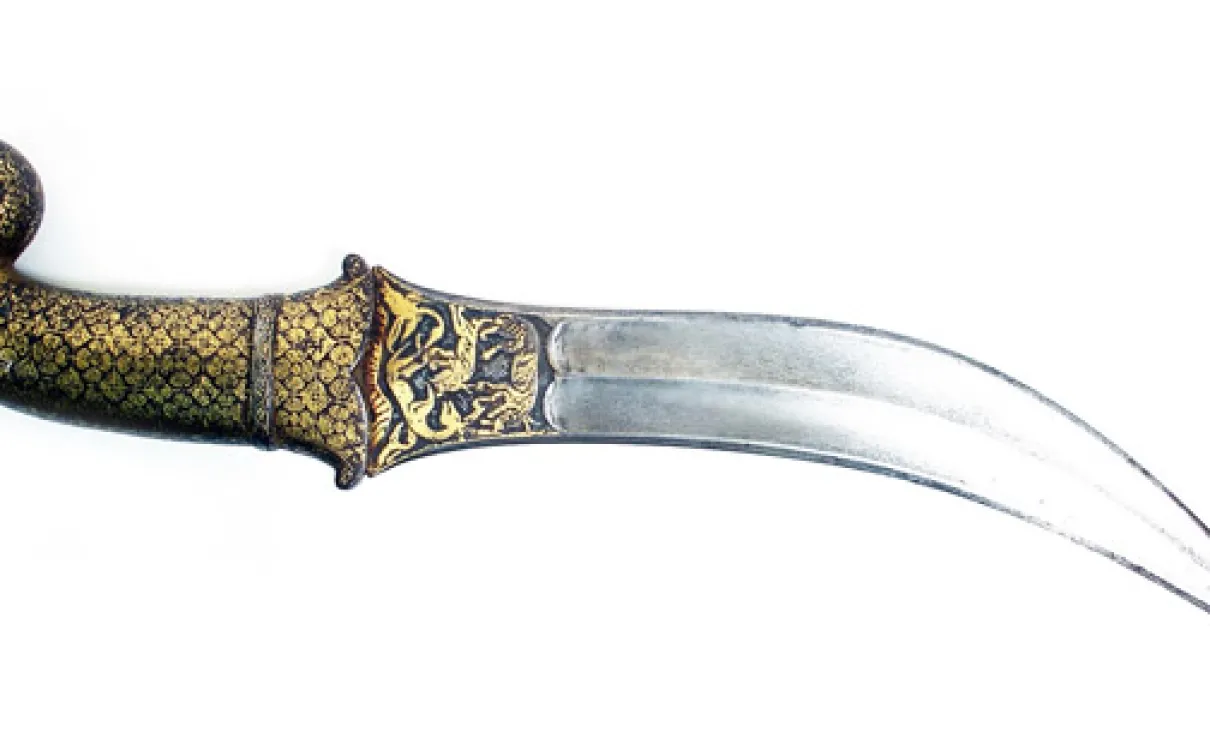Weapon Wednesday: the "djanbīyya" dagger
Published
Categories
Author
Blog Post
The Middle Eastern two-edged curved dagger is one of the most recognizable weapon forms. Typically it is known by the Arab term djanbīyya sometimes Anglicised as "jambiya", or also often the Arabic term khandjar, but these curved daggers are found across the Middle East. Curved daggers have a long history, the famous sica of the ancient Balkans which spread around the Mediterranean in the Roman era is similarly curved, but was sharp only on the inner curved edge. The earliest djanbīyya seem to be 16th century and found in Turkey and Iran, although its true origins may in fact be Arabia. The curve makes it very good for most styles of knife-fighting (which I discuss in an earlier blog), but it would probably be a problematic weapon for a thrust through armour. This may explain the spread of the form in the gunpowder age, when armour was less common on the battlefield. Essentially it is ideal for a draw-cut across unprotected flesh, or a thrust into unprotected vitals.
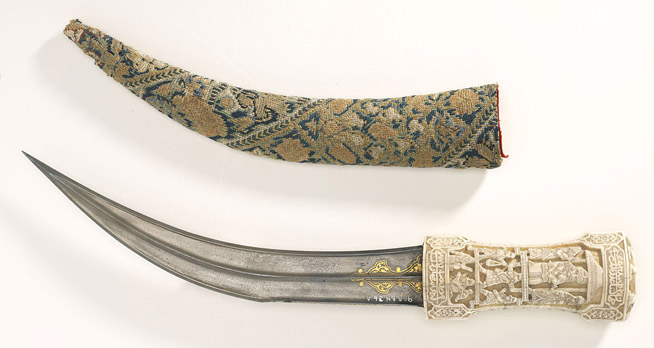
Djanbīyya from 18th century Iran (909.64.36.A-B)
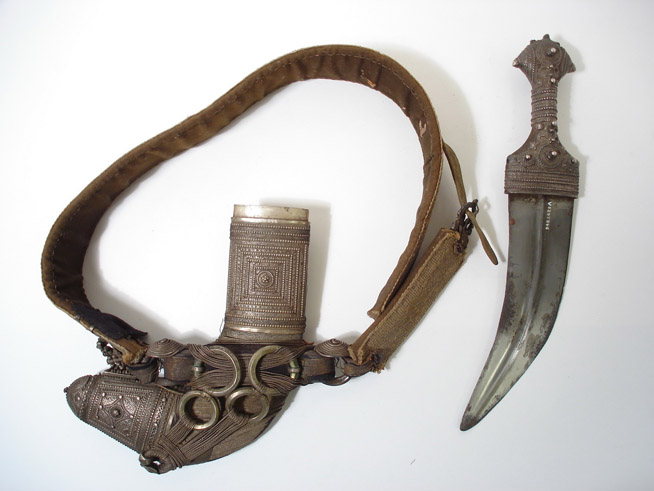
Djanbīyya from early 20th century Yemen (948.1.429.A-B), the Yemeni craftmen made extensive use of silver to make their elaborate daggers.
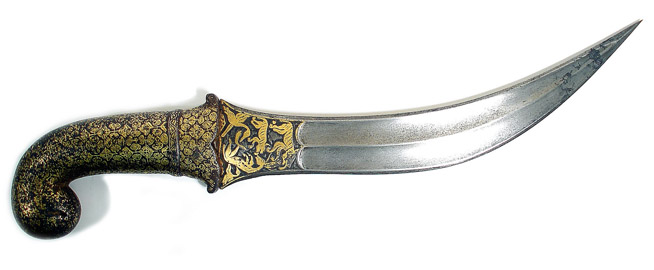
This djanbīyya is from Mughal India from about the 18th century, and is decorated with "koftgari" gilding, in which thin gold wire is hammered onto the steel surface. (2004x5.151)
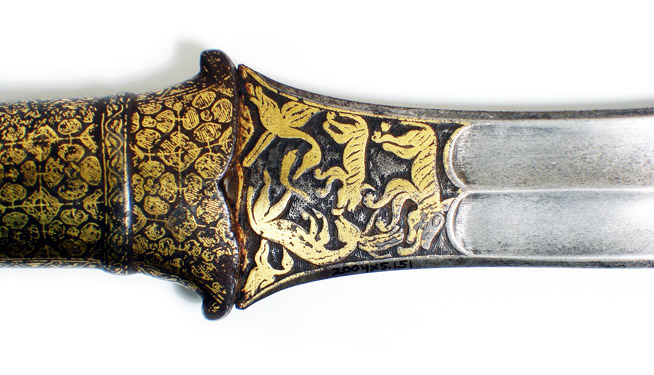
Djanbīyya from Mughal India (2004x5.151), notice the "koftgari" gilding, with fine gold wire hammered into the steel surface.
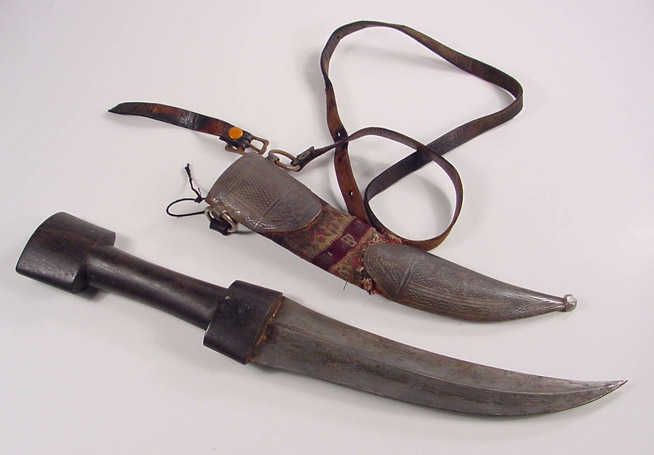
Early 20th century djanbīyya acquired by ROM archaeologist T. Cuyler Young Jr. during his travels in Iran. (2005.95.36.1-2)
